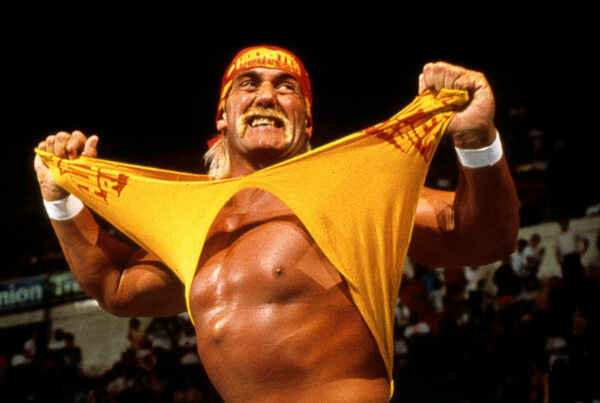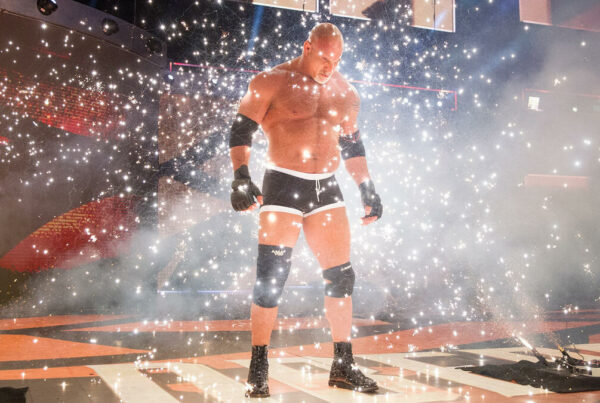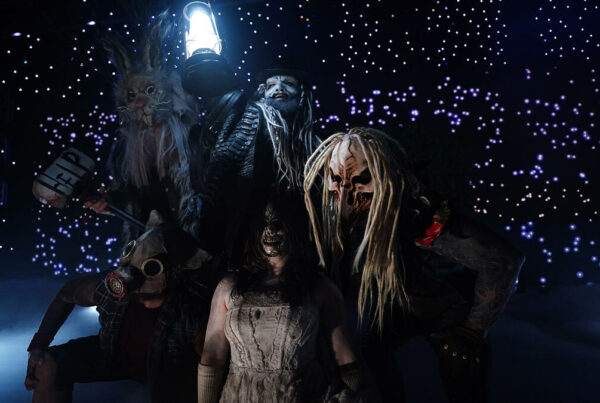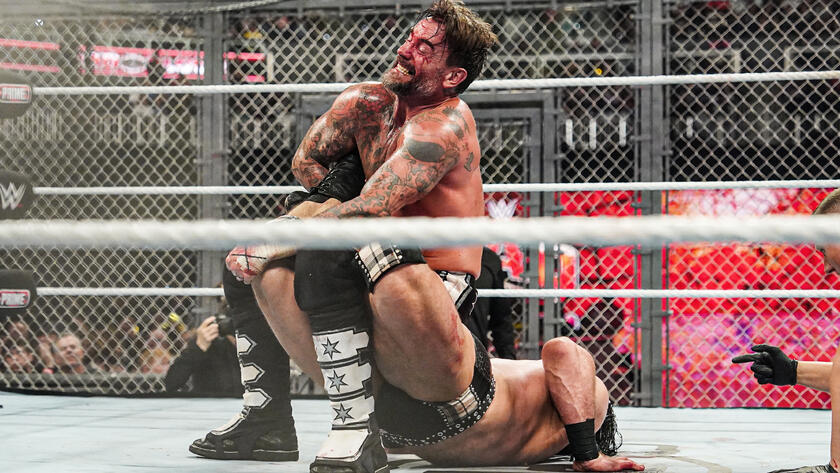
For six of his first eight years as a WWE Superstar, CM Punk was forced to toe the line as a PG performer with an R-Rated mind for the business. A foul-mouthed, blood-letting lightning rod for heat and controversy, restricted to advertiser friendly standards and practices. It felt like a match made in Human Resources.
A decade on from Punk’s unceremonious departure from Stamford, CT, the two-time WWE Champion returned to a very different landscape in November, 2023. The PG rating may still have been present, but once The Rock decided to show up and start telling people not to f**k with The Final Boss on live TV, the rating was less of a rule and regulation and more of a suggestion.
Punk, of course, utilised this slackening of the rulebook to his advantage. It was nothing groundbreaking, but dropping a ‘dips**t’ on Drew McIntyre and Seth Rollins on the road to WrestleMania and getting a touch of colour in his strap match with the Glaswegian in Berlin suggested that Punk had more leeway than most when it came to censorship.
Then came The Last Battle of Atlanta II.
At Bad Blood on 5th October, Punk and McIntyre painted the town red with the aid of wrenches, toolboxes, chairs, chains and mesh. The Second City Saint was the first to wear the crimson mask, before McIntyre saw red with a chasm in his cranium that required 16 staples to repair.
It was a battle the likes of which had not been seen in a WWE ring in over 15 years. Of course, Brock Lesnar had inflicted his own personal brand of brutality on the likes of John Cena, Randy Orton, Roman Reigns and The Undertaker in which blood had been spilled, but this was often done in a way that wasn’t necessarily always on-script. Punk promised blood, and he delivered it. In buckets.
Looking back on some of the 45-year-old’s finest hours as a professional wrestler, you are reminded of his blood soaked wars with MJF and Eddie Kingston in AEW and the dog collar match with Raven that is forever immortalised in ROH history (even if the promotion’s current owner is probably loathe to mention it again for the forseeable future). Punk’s cell match with McIntyre stands alongside all of these, probably even surpassing them, which is far, far easier said than done.
The programme with the former 3 Man Band member will stand as a seminal body of work within an already Hall of Fame worthy career. This is because Punk was allowed to flourish away from the restrictions of what will make advertisers balk. Phil Brooks was allowed to be Phil Brooks. He talked his s**t, he caused chaos and he shed enough blood to look like he’d just walked off the set of Terrifier 3. For someone as obsessed with comic books as Punk is, the Chicago native has never had any interest in being SuperMan. He has and always will be the anti-hero. He will also be the villain once again before he eventually stares at the lights one last time. Much like his childhood hero Steve Austin, he works best when censors are kept well the f**k away from him.
Which is why WWE’s impending move to Netflix could not be arriving at a more opportune time.
At 45 years of age and with some very serious recent injuries to his name, Punk will more than likely be viewing this run with WWE as his final opportunity to head kicking and screaming off into the sunset. His place in pro-wrestling history is secured, although he is currently in possession of two very different legacies. There is the legacy of his early noughties run that electrified the indies and made him the hottest unsigned act in North America, helping put more eyeballs on Ring Of Honor and laying a foundation for those after him to thrive and build upon.
Then there is the legacy attached to his WWE run between ’06 and ’14, Pipebombs and all. It is a legacy that spun out his two years in All Elite Wrestling, acting as a reference point for why he returned to the squared circle after seven years away, in 2021. The memories of this time may be replete with unforgettable promos and killer matches, but there is also an overwhelming moroseness to Punk’s successes during this pair of runs. He was seldom happy with operations in WWE and burned out of AEW in a blaze of backstage infamy.
Those two years in AEW served as a reminder of what Punk is capable of without the shackles on. That he has been able to carry this over into his second WWE spell is a testament to Paul Levesque trusting that the best version of Punk is not who we originally saw in WWE for eight bittersweet years. Wildly entertaining and popular though he was.
Over on Netflix, which will be Monday Night Raw’s home for at least the next five years, beginning from January 2025, the restrictions of cable television will not be as prominent. The sound editing of the USA Network will be nowhere to be seen. Blood can be spilled a little more freely and ol’ Punker can dial things up to 11 on a much more frequent basis.
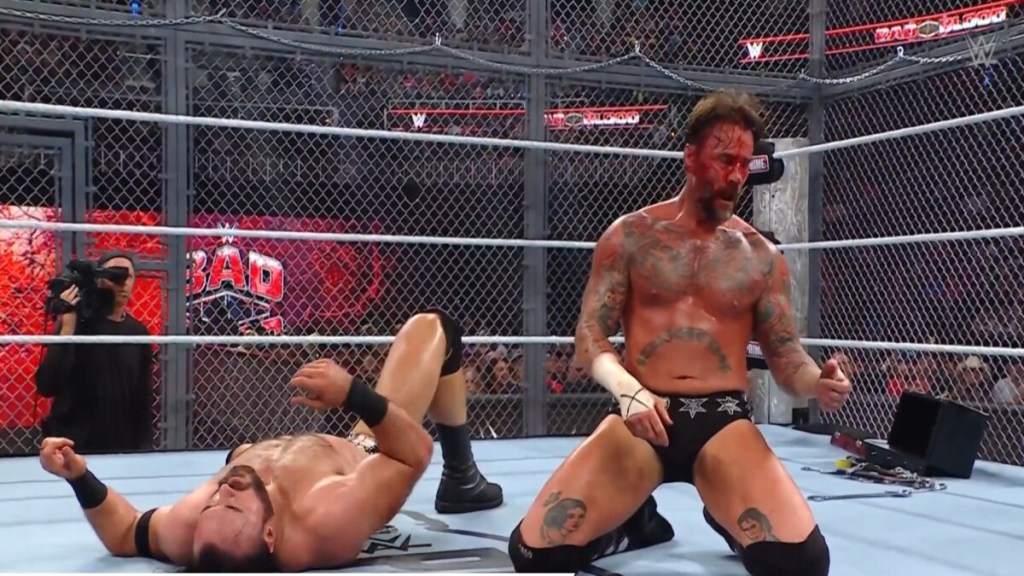
Punk painted his masterpiece with Drew McIntyre at Bad Blood. Image: WWE
Of course, Punk pushed boundaries during his first run in the old New York territory, but there could still never be any bloodbaths. A programme like the one he has just put together with McIntyre could never have materialised in the manner it did over the last six months. The extra creative leniency that will surely come with a shift to streaming will benefit WWE as a whole, but in particular an artist like Punk, who has spent so much of his career not merely thinking outside of the box, but telling the box to go f**k itself before setting fire to it. It has been a technique that has sometimes not endeared him to colleagues and management alike, but it has made Phil Brooks one of the most magnetic talents to ever walk the aisle.
Netflix promises a new era of content and production for WWE programming. Whether it’s simply streaming Raw every Monday (and SmackDown, NXT and Premium Live Events in other, non-US regions) or splintering off with reality series and documentaries to sit alongside the live, in-ring offerings. Punk’s mind for the business could be crucial to the success of these offshoots. He is a marquee name that both hardcore and casual fans will follow. He is a mentor-in-the-making for so many of WWE’s next generation, as evidenced by the amount of time he is dedicating to NXT. Put his personality front and centre for a documentary or reality series and Netflix could have a spandex clad Drive To Survive success story on their hands.
This is not to put down Punk’s endearing 20 plus years of success down to merely using foul language and bleeding a lot. His work with John Cena, Randy Orton, Rey Mysterio, Jeff Hardy, the Nexus, the Straight Edge Society, The Undertaker and Brock Lesnar are testament to how malleable a character he can be when working within the parameters of a promotion who were unwilling to stray too far from family friendly fun. But it is when the intensity is heated up that Punk ascends to a level which has made him one of the most important names in the business in the 21st century. Netflix is a home that will nurture that side of the former WWE and World Heavyweight Champion for the remainder of his career, however long that may be.
